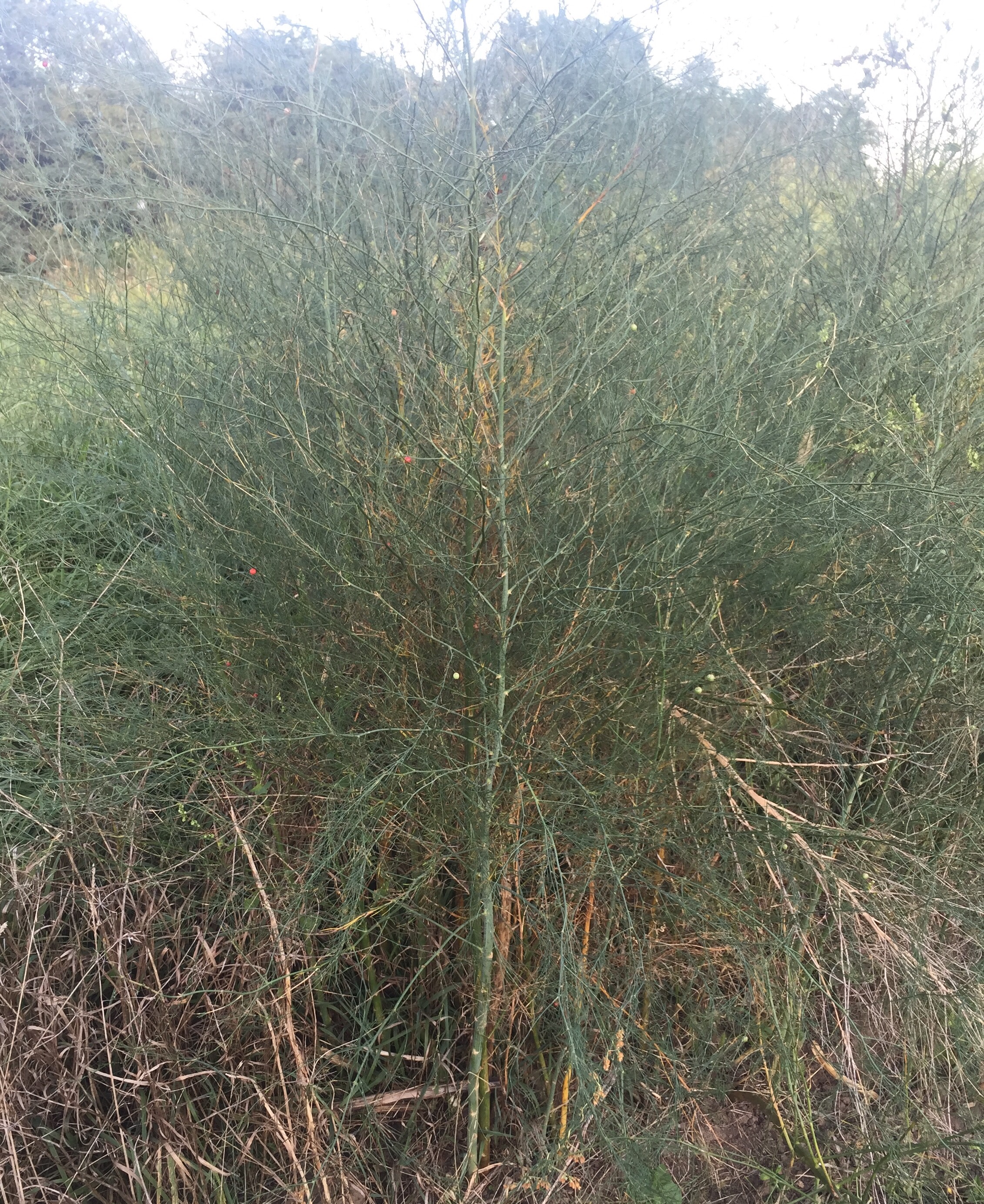 Wild asparagus (Asparagus officinalis, et species) is the same plant as garden asparagus. It will grow where it is planted for decades if the growing conditions are good, and those little red berries contain seeds that can be distributed by birds. I have found it on Islands in the Little Missouri river, long-abandoned farmsteads in appalachia, the Badlands of the Dakotas, and many other places besides.
Wild asparagus (Asparagus officinalis, et species) is the same plant as garden asparagus. It will grow where it is planted for decades if the growing conditions are good, and those little red berries contain seeds that can be distributed by birds. I have found it on Islands in the Little Missouri river, long-abandoned farmsteads in appalachia, the Badlands of the Dakotas, and many other places besides.
I grew up gathering wild food as part of my family’s diet, and wild asparagus was a particular treat to find, a couple times a year. I had two different places that i would frequently check for it, which both cropped at the same time. I can vividly remember how proud i felt as a small child when asparagus that i had gathered was part of our family’s dinner.
.
Later, the first book i ever read on wild edibles was called “Stalking the Wild Asparagus” by Euell Gibbons. A good book if you haven’t read it, it helped to make wild edibles part of the ‘back to the land’ concept in the 1960’s.
.
Asparagus is good to eat before the shoot starts branching, when it is 5-10 inches tall. If it’s all tall and feathery like what’s pictured here, you can peel it with a knife (the outside is too fibrous to eat) and eat the inside part. It tastes just like asparagus from the grocery store.
.
The root is the usual part to use medicinally. It is calming to the heart and soothing to the lungs, making it useful for some heart issues and also spastic, irritated, non-productive coughs. A tea made from either the root or the branches is diuretic and slightly laxative, and contains lots of antiinflammatory and chelating sulphur compounds. The entire plant contains inulin, a special starch that helps to nourish beneficial intestinal bacteria.